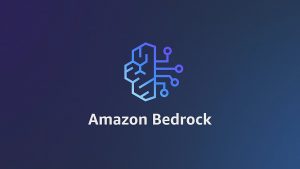Pulse atmosphere electric at #IBMPulse 2014 | #CIOAngle
![]() The atmosphere was electric at IBM Pulse 2014. Pulse was trending on the Internet as the entire IBM organization — software, services, even hardware — unveiled a total realignment behind cloud. The conference itself was completely remade. What was IBM’s software conference is now it’s cloud conference, and the blizzard of announcements makes the connection clear.
The atmosphere was electric at IBM Pulse 2014. Pulse was trending on the Internet as the entire IBM organization — software, services, even hardware — unveiled a total realignment behind cloud. The conference itself was completely remade. What was IBM’s software conference is now it’s cloud conference, and the blizzard of announcements makes the connection clear.
Obviously every asset in IBM’s software portfolio either is or soon will be ported to SoftLayer and the IBM cloud. This means that IBM customers who use its software internally run their organizations can expect the same software in the cloud. Those who use IBM’s management software — for instance Maximo asset management, whose port was announce Tuesday — will be able to manage their hybrid cloud environments as a unified environment using familiar tools. If they need help with those hybrid environments, IBM consulting is happy to provide that.
More surprising, even the hardware is realigned. One of the most significant, and least obvious, announcements at Pulse is that IBM Power systems are being ported to SoftLayer, a non-trivial task since the network was designed for x86. IBM expects to have the port completed by mid-year. This is important because, as IBM SVP Tom Rosimilla says, “Infrastructure is important.”
Power on SoftLayer is important to support compute loads that require the higher CPU speeds and capacity Power delivers. SoftLayer supports both virtualized and bare metal environments, providing absolute maximum performance for applications that require that. And because the IBM Cloud runs on the high speed SoftLayer private network from a global group of data centers — growing to 40 this year — strategically place to be as close as possible to customers, rather than the public Internet, it delivers the benefits of that performance to the customer.
Watson on SoftLayer
X
![]() One of those very demanding compute loads is the Watson cognitive compute engine, and another of the electric announcements at Pulse is that this first of the third generation application platforms will also be ported to SoftLayer this year. Pulse attendees can see a demo of Watson on SoftLayer at Pulse, but the port, which of course runs on Power, not x86, will not be complete until the end of the third quarter, possibly later.
One of those very demanding compute loads is the Watson cognitive compute engine, and another of the electric announcements at Pulse is that this first of the third generation application platforms will also be ported to SoftLayer this year. Pulse attendees can see a demo of Watson on SoftLayer at Pulse, but the port, which of course runs on Power, not x86, will not be complete until the end of the third quarter, possibly later.
This is particularly important because Watson at its heart is a Big Data analysis engine designed to answer a new class of questions using new kinds of data. It is not just another system to derive numerical answers from structured data. Steve Mills, SVP and group executive heading IBM Software and Systems said on theCUBE from Pulse that “What Watson really represents is a set of capabilities brought together in a system designed to deal with complex problems where the amount of information is huge and the nature and structure of the information makes it very challenging to know what the right answer is.” (see embedded video below).
Initially three Watson applications will be available: Watson Discovery Advisor, Watson engagement Advisor and Watson Development Cloud, which provides the technology, tools, SDKs and APIs to allow third parties to design, develop and deploy cognitive applications. But this will only be the start, and one IBM spokesperson said the company is already getting inquiries from entrepreneurs about building third-party SaaS products on the Watson platform. And IBM definitely is encouraging them. Wednesday at IBM’s new global mobile computing conference in Barcelona, IBM CEO Ginni Romati announced a new IBM competition for third-party developers to create Watson-based mobile applications. The two winners will receive IBM support for development and promotion of their applications. This would not make sense if Watson was not going to be on SmartLayer.
Honestly the thought of Watson on my smart phone is a little breathtaking. As a 25-year mobile computing veteran I have been an early adapter on many mobile trends, from organizing my life on a Casio B.O.S.S. to reading e-books from eReader on my Palm. But Big Data analysis is an incredible leap, something I never expected. But somebody at IBM asked “Why not?” And now no less than IBM’s CEO is throwing out the first pitch.
Strategic Implications
X
But the larger implications of this are very interesting in terms of IBM’s strategic direction, its full commitment to the trio of related tech/business trends — cloud, Big Data and mobile — that are transforming IT, and the effectiveness of its organization. One of the major internal functions of IBM’s large R&D group is to identify important technology trends. In this case that made it aware of what was happening early in the process. The tremendous change of direction that has become visible in the last two months, starting with the big Watson and IBM Cloud expansion announcements in January, is a product of more than four years of planning and development, including a series of strategic acquisitions, the construction of a worldwide network of data centers, software and hardware development, and active involvement in several Open Source projects. None of this was random, it all was part of an overall strategy that has evolved with the markets and technology but always had the goal of bringing IBM successfully forward into the new computing age and to an extent shaping that new reality.
For users, from SMBs to enterprises, this provides a very clear alternative to AWS and the Google Compute Engine. CIOs need to look at the relative advantages of each and choose which meets the needs of the organization and the specific application or service. As with all such decisions it is a matter of trade-offs — costs versus what service levels the organization really needs
IBM SVP Steve Mills on TheCUBE from IBM Pulse 2014
Graphics courtesy IBM Corp.
A message from John Furrier, co-founder of SiliconANGLE:
Your vote of support is important to us and it helps us keep the content FREE.
One click below supports our mission to provide free, deep, and relevant content.
Join our community on YouTube
Join the community that includes more than 15,000 #CubeAlumni experts, including Amazon.com CEO Andy Jassy, Dell Technologies founder and CEO Michael Dell, Intel CEO Pat Gelsinger, and many more luminaries and experts.
THANK YOU













